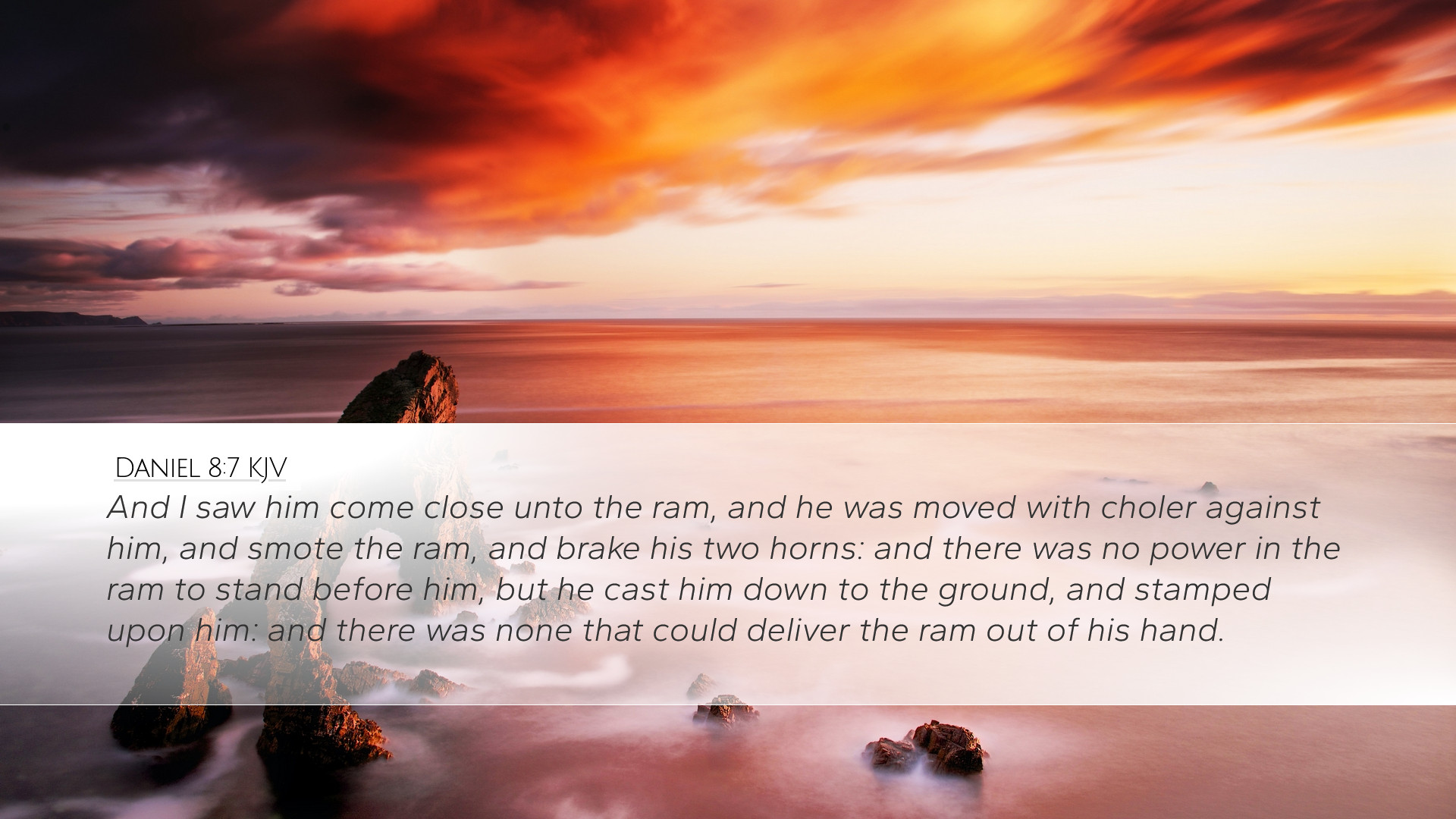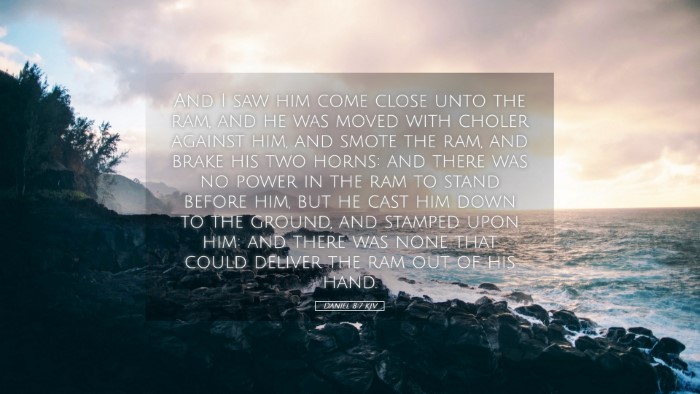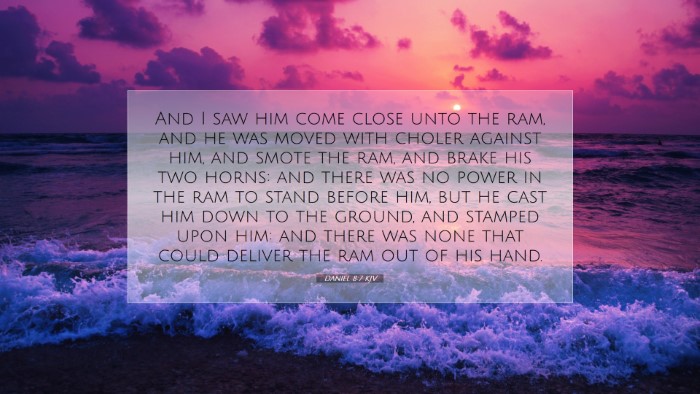Commentary on Daniel 8:7
Text of Daniel 8:7 (ESV): "I saw him (the ram) attacking the goat, and the goat charged at him with great rage and struck the ram and broke his two horns; and the ram had no power to stand before him, but he cast him down to the ground and trampled on him, and there was no one who could rescue the ram from his power."
Introduction
The passage in Daniel 8:7 is rich in symbolism and prophetic significance. To understand it fully, we will explore various insights from prominent public domain commentaries, including those by Matthew Henry, Albert Barnes, and Adam Clarke. This analysis aims to provide depth for pastors, students, theologians, and Bible scholars.
Contextual Background
The vision recorded in this chapter occurs during the reign of King Belshazzar and is given to Daniel during his captivity in Babylon. It foreshadows the rise and fall of empires, particularly the Medo-Persian Empire signified by the ram and the Greek Empire represented by the goat. These visions serve as a reminder of God's sovereignty over history.
Exegesis of the Passage
- The Ram and the Goat: According to Matthew Henry, the ram represents the Medes and Persians, characterized by its two horns, which denote the dual nature of this kingdom. The goat, interpreted as the Greek Empire, signifies the swift and aggressive leadership of Alexander the Great.
- Attacking Dynamics: Albert Barnes highlights the aggressive action of the goat in this passage, symbolizing the rapid conquest and overwhelming might of the Greek Empire against its Persian adversary.
- The Broken Horns: The broken horns of the ram, as noted by Adam Clarke, symbolize the annihilation of the Persian power and its inability to resist the advances of the goat, illustrating the inevitability of God's plan unfolding throughout history.
Theological Insights
Within this passage, several theological themes emerge that are valuable for reflection:
- Sovereignty of God: The ultimate control that God holds over the kingdoms of the earth is vividly illustrated. Despite the apparent power of nations, it is God's providence that orchestrates the rise and fall of empires.
- Divine Judgment: The fate of the ram symbolizes God's judgment against those who oppose Him. It serves as a warning to those who engage in injustice and violence, as they will ultimately be overthrown.
- Hope and Restoration: For the faithful, these visions not only depict judgment but also the hope of eventual restoration and deliverance from oppression, as God ensures that His people are ultimately protected and redeemed.
Historical Implications
The historical implications of this prophecy are profound. The goat's attack on the ram represents the turbulent transitions in power dynamics, marking the decline of Persian dominance and the rise of the Greeks:
- The Rise of Alexander: The goat's aggressive nature and rapid movement depict Alexander's swift military campaigns. His victories against the Persians were quick and decisive, fulfilling this prophecy accurately.
- The Fall of Empires: The imagery of trampling underfoot signifies not just conquest but the devastation that often accompanies such radical shifts in power. The lessons drawn from this might help modern readers to understand political transitions and their implications in a spiritual context.
Application for Contemporary Believers
For today's believers, Daniel 8:7 offers several applications:
- Trust in God's Plan: Just as God orchestrated events in Daniel's time, modern believers are encouraged to trust that He is still at work in the world, even amid chaotic circumstances.
- Recognition of Their Position: The imagery serves as a reminder for Christians to recognize the significance of spiritual warfare. The conflicts portrayed symbolize ongoing battles within the faithful, encouraging vigilance and reliance on God's strength.
- Preparation for Change: Understanding historical shifts can prepare believers for changes in their own lives and societies. Just as empires rise and fall, so do circumstances in individual lives, and God's faithfulness remains steadfast.
Conclusion
Daniel 8:7 encapsulates powerful themes of divine sovereignty, judgment, and the intricate nature of prophetic fulfillment. Its rich symbolism, when viewed through the lenses of historic and theological reflection, provides profound insights for those seeking to understand God's workings in history and His plans for humanity. The commentaries of Matthew Henry, Albert Barnes, and Adam Clarke aid in unpacking these truths, reminding contemporary readers of God’s overarching authority and the hope that emerges through His prophecies.


